Color and Composition Explained by a Pro Landscape Photographer
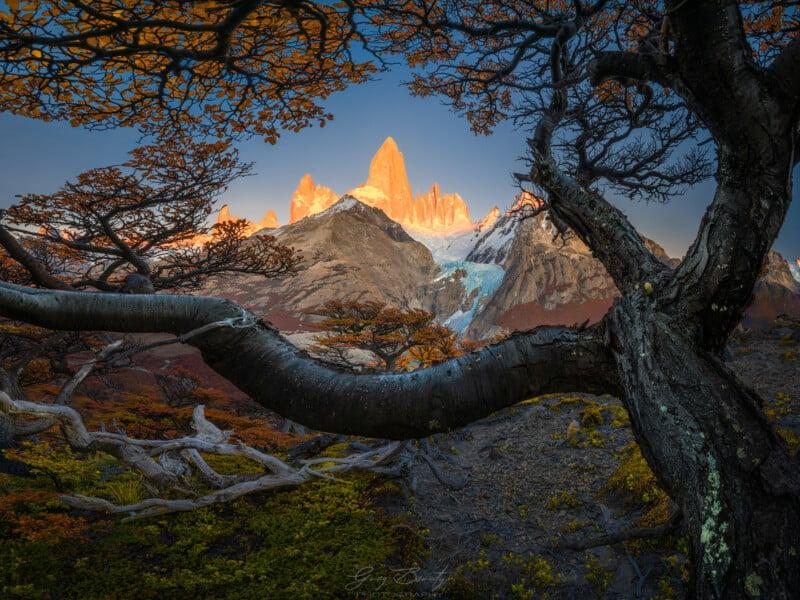
Award-winning landscape and nature photographer Greg Boratyn is known for combining brilliant photography with a penchant for educating photographers through presentations and his international workshops.
Boratyn’s portfolio contains colorful landscape photos that transport viewers to a time and place. His work places significant emphasis on capturing the essence of the spirit of a scene while maintaining a strong sense of realism.
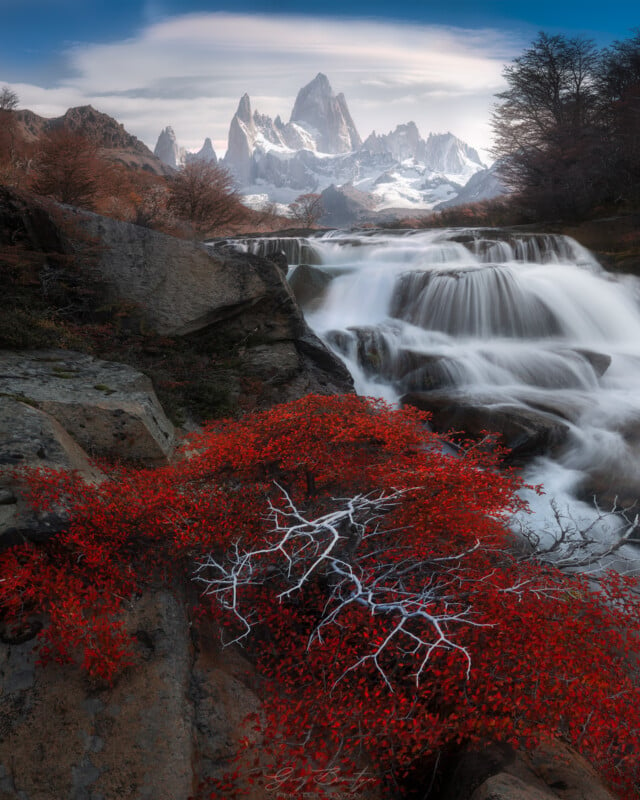
PetaPixel spoke with Boratyn about his career, portfolio, passion for helping other photographers improve their work, and artistic vision.
Becoming a Serious Photographer During the Analog to Digital Transition
“For many photographers, myself included, the transition to digital photography brought about significant changes and opportunities,” Boratyn tells PetaPixel.
Advances in digital photography enabled Boratyn to grow and develop as a photographer in numerous ways. Digital photography provided instant feedback, allowing him to get a real-time view of a scene and check his images. With the instant feedback provided by digital cameras, Boratyn found it much easier to develop his technique.
There were other benefits for Boratyn as digital cameras took over, including significant reductions in cost, significantly easier post-processing and editing, a streamlined workflow, and improved accessibility. Being able to capture, view, edit, and share images quickly proved vital for Boratyn as he built his career.
A Naturalistic Approach in the Digital Age
One of the benefits of digital that Boratyn expressed is that it allowed him to edit and digitally manipulate his images easily. However, with great power comes great responsibility.
“When it comes to my artistic approach and relationship with post-processing, I strive to maintain a balance that preserves the authenticity and essence of the scene while utilizing digital tools to enhance the final result,” Boratyn explains.
“For me, the ultimate goal of post-processing is to bring out the inherent beauty and emotional impact of the captured moment rather than creating an artificial or heavily manipulated image. I view post-processing as a means to refine and fine-tune the photograph, not to drastically alter or distort the reality I experienced at the time of capture,” he continues.
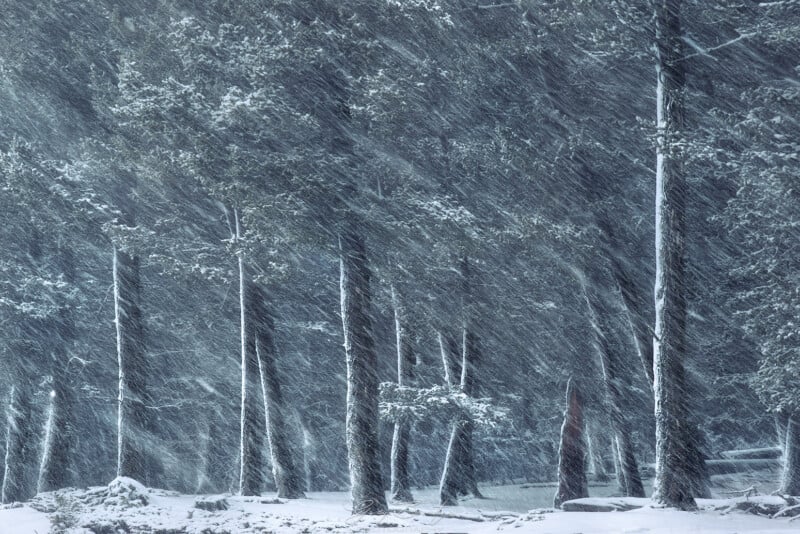
To that end, he’s careful to avoid excessive or heavy-handed edits that reduce the authenticity of a scene. He wants to use digital technology to strengthen the connection between the viewer and the photograph, but excessive or unnaturally editing techniques can serve to sever that bond. For Boratyn, a successful photograph immerses the viewer and keeps them focused.
“Of course, every artist has their unique approach to post-processing, and there is no right or wrong way to do it. It’s a personal choice based on one’s artistic vision and intent,” he adds.
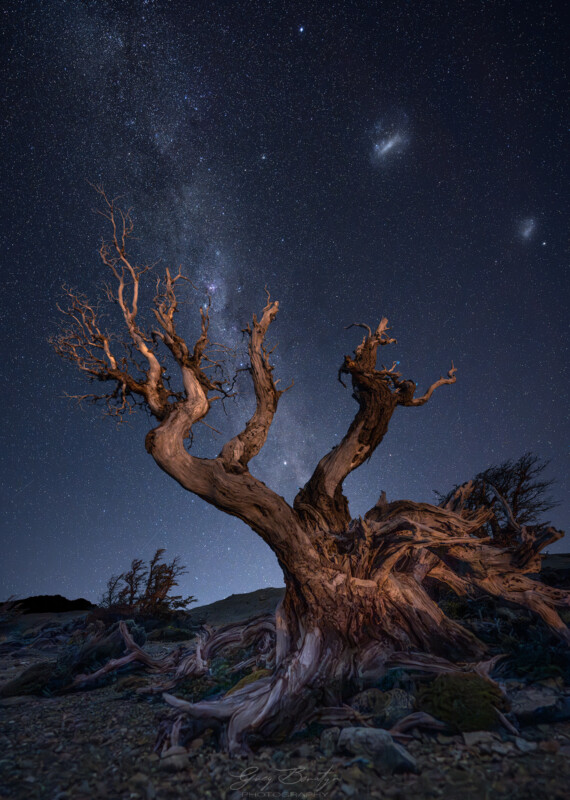
“In my case, I value the balance between the power of digital tools and the preservation of a natural aesthetic. It is this approach that resonates with me and, apparently, with viewers like yourself who appreciate that sense of authenticity and timelessness,” Boratyn explains.
His goal is to evoke emotion, and digital cameras and the accompanying post-processing software are tools in his kit. No matter how successful professional photographers such as Boratyn achieve their results, and there’s a diverse range of approaches to that goal, they all have something in common — intention and consistency.
Within a Consistent Artistic Vision, Boratyn Uses Diverse Lenses
When viewing Boratyn’s portfolio, a few things are immediately apparent. He relies heavily upon technically-sound photographic techniques, loves color, aims to enhance reality in subtle ways, and he uses many different lenses.
A lot of landscape photography is captured using wide-angle lenses. They’re a popular first choice for budding landscape photographers. However, photographers like Boratyn show that there’s a place in every landscape photographer’s bag for long lenses.
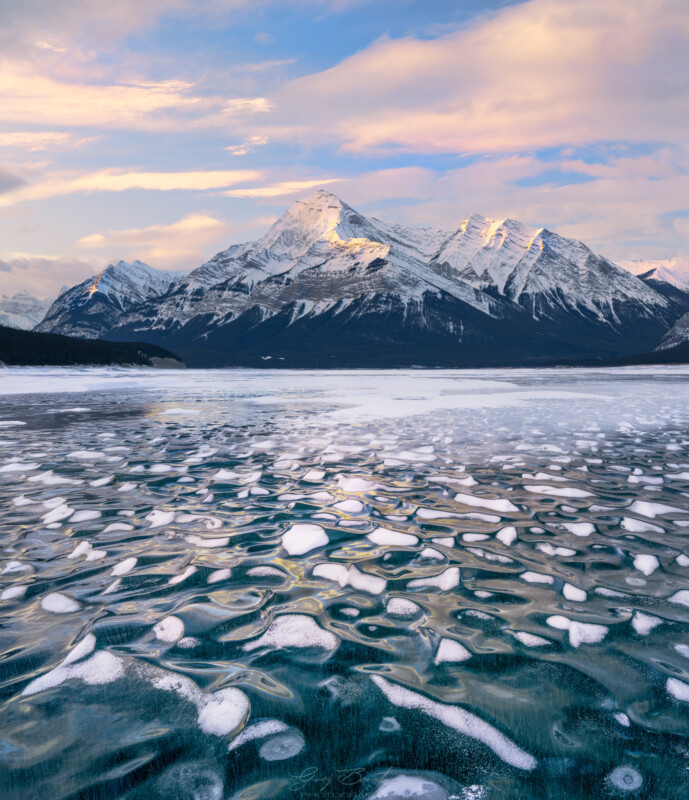
“The choice of lens and focal length plays a crucial role in creating compelling compositions and visual storytelling,” he says.
Wide-Angle Lenses
“Wide-angle lenses, typically with focal lengths below 35mm, allow me to capture expansive scenes and convey a sense of grandeur. They are useful for landscapes, architecture, and environmental portraits, as they emphasize the foreground and provide a broad view of the surroundings. Wide-angle lenses can create a sense of depth, leading lines, and a sweeping perspective that immerses the viewer in the scene,” Boratyn explains.
Standard Lenses
There’s a place for standard lenses, such as 50mm primes, in his kit, too.
“Standard lenses, typically with focal lengths around 50mm, are versatile and closely mimic human vision. They offer a natural perspective and are well-suited for documentary-style photography and street photography. Standard lenses are often my go-to choice to capture scenes with a sense of normalcy and authenticity, allowing the viewer to feel as if they are present in the moment,” says Boratyn.

Telephoto Lenses
“Telephoto lenses, with focal lengths above 70mm, are valuable tools for compressing distance and isolating subjects from their surroundings. They are excellent for capturing details, portraits, and wildlife photography. When I reach for a long lens, it is often because I want to emphasize a specific subject or element within a scene while minimizing distractions. Telephoto lenses help me create a more intimate and focused composition by narrowing the field of view and drawing attention to the subject,” he explains.
Specialty Lenses
Boratyn’s tricks of the trade don’t stop there. He also occasionally uses macro lenses and even fisheye lenses.
Picking the Right Lens
“Ultimately, the choice of lens depends on the story I want to tell and the visual impact I aim to achieve. Each focal length offers a distinct perspective and allows me to convey emotions, guide the viewer’s attention, and create a specific atmosphere within the frame. By carefully selecting the right lens for each situation, I can enhance the composition, emphasize important elements, and evoke the desired response from the viewer,” Boratyn explains.
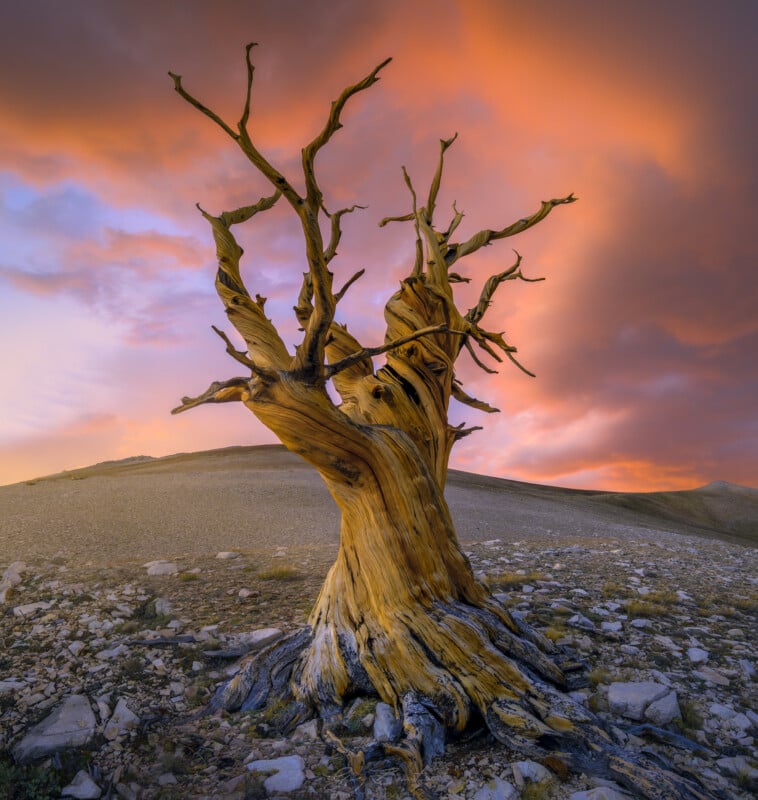
There are many ingredients to compelling landscape and nature photographs, including lighting, framing, and subject positioning. However, while these compositional elements ultimately comprise the final photo, the lens a photographer selects is an integral part of the process. The choice of focal length affects how an artist can compose the scene and determines what can be included. But, perhaps most importantly, focal length also affects what a photographer can omit from a frame.
Color is a Powerful Component of Composition
For Boratyn, “color is a powerful compositional element.” He uses it to evoke certain emotions in the viewer in specific ways.
Color Harmony and Contrast
“I pay close attention to the interplay of colors within a scene. I seek out color harmonies, where colors complement and reinforce each other, creating a sense of unity and balance. Conversely, I also look for color contrasts that add visual interest and grab the viewer’s attention. By using complementary colors (opposite hues on the color wheel) or contrasting warm and cool tones, I create dynamic compositions that draw the viewer in,” Boratyn explains.
Color theory has long been critical to the success of color photographers and artists. The digital age of photography has only made it easier to make precise adjustments to hues and saturation to achieve the desired result.
Color as a Narrative Element
As for the emotional qualities of colors, Boratyn explains that different colors include certain symbolic meanings. He takes advantage of this by strategically using color to reinforce the desired narrative of a photograph.
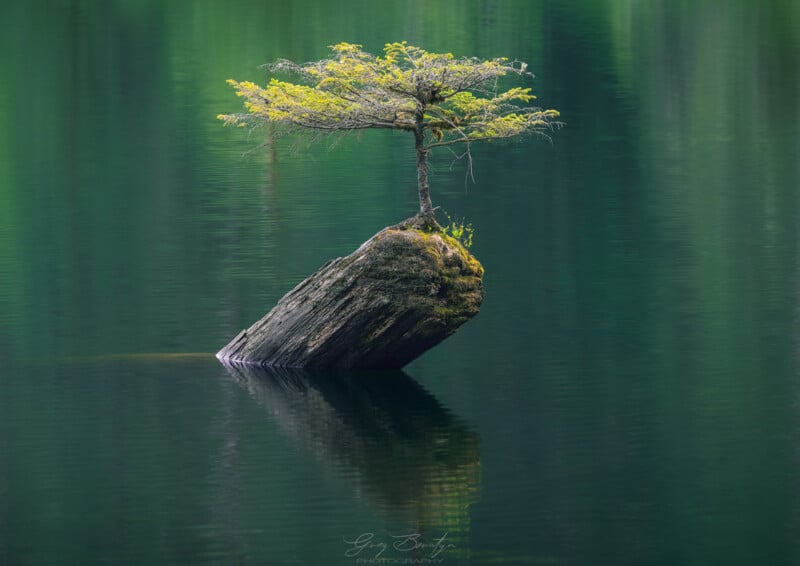
“For example, warm tones like golden hues or fiery reds may evoke feelings of warmth, energy, or passion, while cool tones like blues and greens can evoke calmness, tranquility, or melancholy. By aligning the color palette with the intended emotional response, I strengthen the connection between the viewer and the image,” he tells PetaPixel.
Selective and Dominant Colors
“Sometimes, I employ the technique of selective color, where I highlight a specific color amidst a predominantly neutral or desaturated palette. This technique directs the viewer’s attention to a particular subject or element within the frame,” Boratyn explains.
He combines this approach with a dominant color technique. Dominant color refers to photographs where a single color “dominates the composition,” which, Boratyn continues, “Can create a bold and impactful visual statement, emphasizing the subject or creating a distinctive atmosphere.”
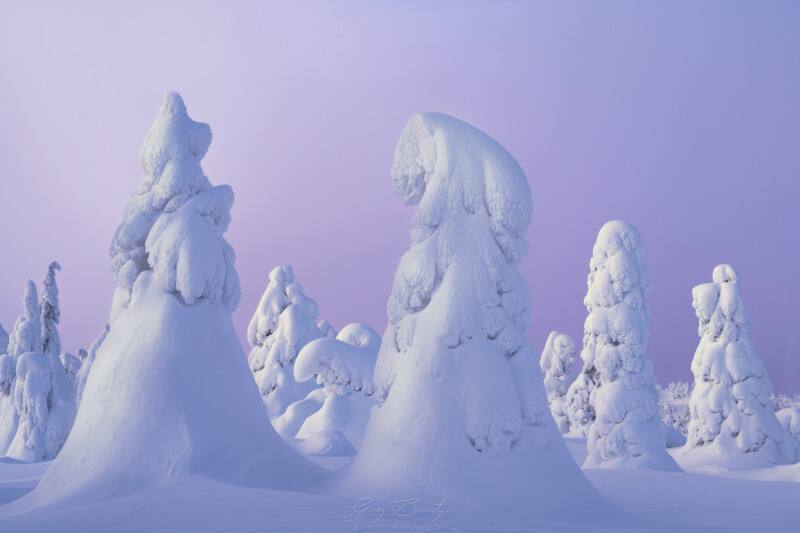
Post-Processing and Color Grading
To achieve specific colors and enable color-dependent compositions, Boratyn utilizes post-processing and color grading. He fine-tunes particular colors to achieve the desired result, including adjusting color temperature, saturation, and contrast.
Like other aspects of his post-processing workflow, Boratyn works to balance realism and artistic expression.
“Color grading techniques allow me to stylize the images further, adding a signature look and feel that aligns with my artistic vision,” he explains to PetaPixel.
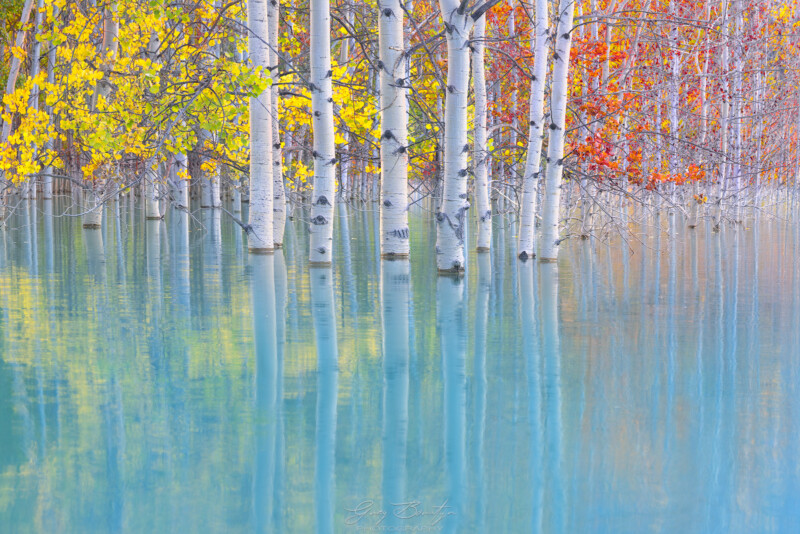
“By utilizing color consciously, I aim to elicit emotional responses from the viewer and enhance the overall impact of my images. Color can convey many emotions, from joy and excitement to tranquility and introspection. Through careful consideration of color harmonies, contrasts, and the narrative potential of each hue, I strive to create visually captivating and emotionally resonant photographs,” Boratyn says.
He adds that it’s worth considering how colors can mean different things and evoke varied emotions depending on the viewer. Nonetheless, he uses color thoughtfully and intentionally to produce certain emotional responses, even if these individual reactions to color can depend upon personal and cultural associations.
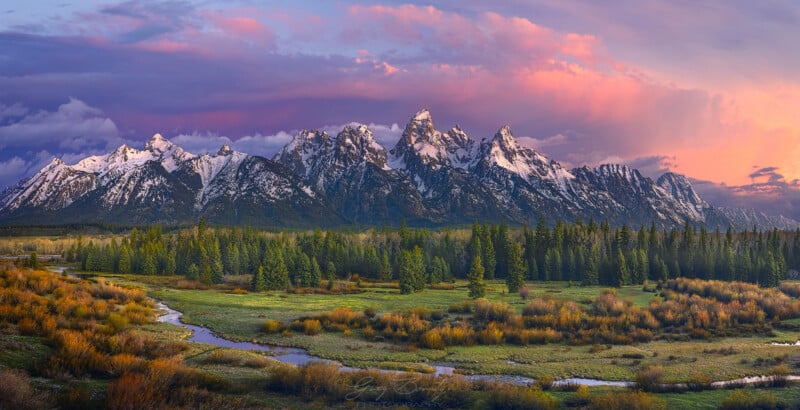
Composition and Scale in Landscape Photography
One of the most challenging aspects of capturing vast landscapes is instilling a sense of scale for the viewer. Even a massive mountain can look relatively small in the frame, especially with a wide-angle lens.
Boratyn employs numerous techniques to capture the grandeur of imposing landscapes, including leading lines and foreground elements.
“I look for natural lines, such as rivers, paths, or mountain ridges, to guide the viewer’s eye through the frame and create a sense of depth. This helps draw the viewer into the scene and gives a sense of scale,” Boratyn explains, adding, “Including a compelling foreground element adds depth and dimension to the image. It could be a rock formation, a tree, or any other object that adds interest and leads the viewer’s eye into the image.”
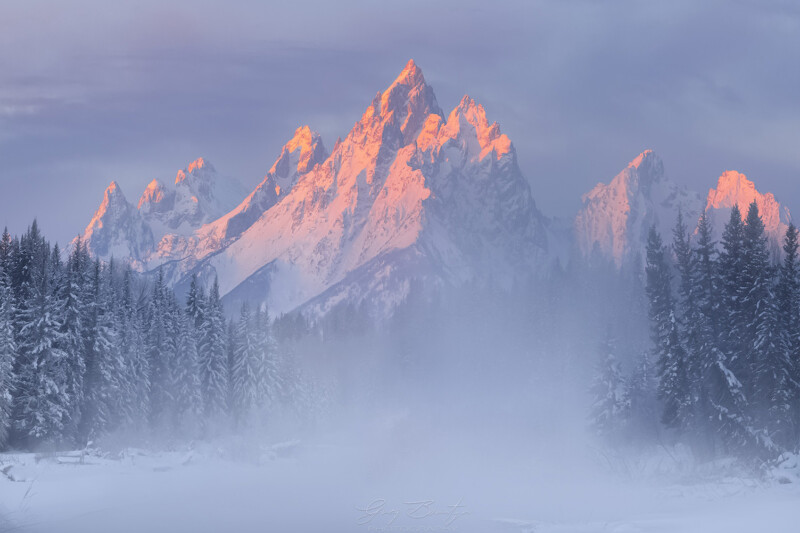
He tells PetaPixel that other effective ways to demonstrate scale in landscape photographs include showing atmospheric elements like clouds, mist, or fog, and composing images with a specific point of reference. Examples of reference points include trees or distant structures. He also likes to experiment with different angles and vantage points.
Familiar to photographers of all experience levels, the “rule of thirds” is also essential for seasoned pros like Boratyn. “I often apply the rule of thirds to place key elements, such as the horizon or prominent features, along the intersecting lines or their intersections. This helps create balance and visual interest,” he says.
Key elements can include dramatic clouds, mountains, or waterfalls. Elements like these create dynamism and make photos more interesting.
However, there’s such a thing as “too much.” Simplicity is common among successful photographs across all genres.
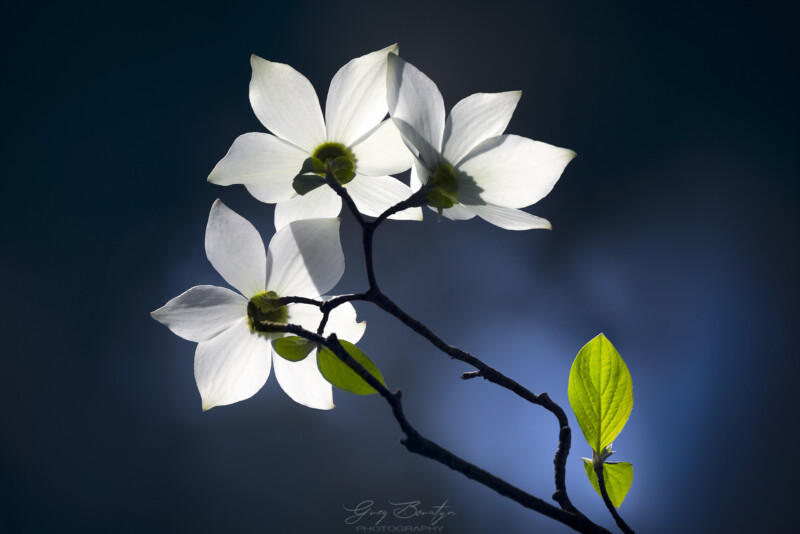
“I isolate the subject by eliminating distracting elements, focusing on its unique characteristics, textures, or patterns. This simplification allows viewers to appreciate the details and beauty that might otherwise be overlooked,” explains Boratyn.
“I strive for a balanced composition, utilizing negative space and carefully placing the subject within the frame. This creates a sense of harmony and allows viewers to focus on the subject itself,” he adds.
Framing is frequent throughout much of his work as well. Throughout this interview, there are images that utilize elements like branches and rocks to help frame a photo’s subjects.
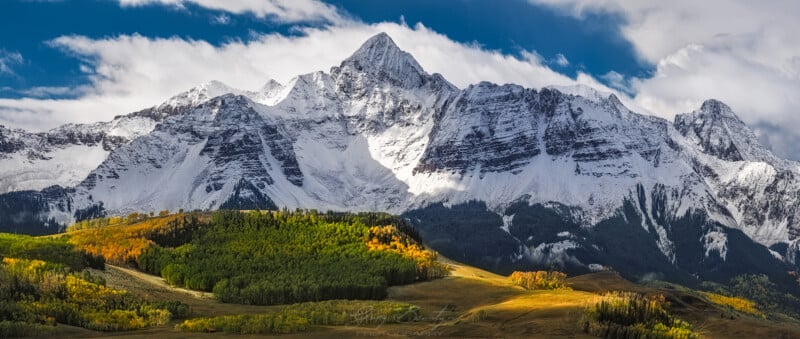
Filters are a Landscape Photographer’s Best Friend
“Filters can be powerful tools for enhancing and controlling light, adding creative effects, and achieving desired results straight in-camera,” Boratyn says.
Even as image editing software has become more advanced and make it easier than ever to completely change a photo’s look and feel, specific filter effects are very difficult or outright impossible to replicate digitally.
For example, polarizing filters, which enable photographers to reduce reflections in a scene, are impossible to implement digitally. “They are particularly effective when photographing landscapes with water, foliage, or skies. Polarizers can remove glare from water surfaces, deepen blue skies, and make colors appear more vibrant,” Boratyn says of polarizing filters.
He also uses neutral density (ND), graduated neutral density (GND), and color-enhancing filters in his work. ND filters help photographers control exposure times and balance light and can be used to smooth water and add movement to clouds. GND filters apply an ND effect to only part of the image and are often used to darken the sky in challenging light, allowing photographers to expose the foreground better.
Boratyn’s filter company of choice is Singh-Ray, a manufacturer he works with. PetaPixel readers looking to add high-quality filters to their kit can use Boratyn’s personal discount code, “GREG10,” to get 10 percent off an order from Singh-Ray.
Education is Important to Boratyn’s Business
Like many professional photographers, Boratyn offers workshops. Offering Boratyn a chance to “pitch” his workshops, he tells PetaPixel that he designs his workshops to be immersive and deliver extensive hands-on learning and instruction.
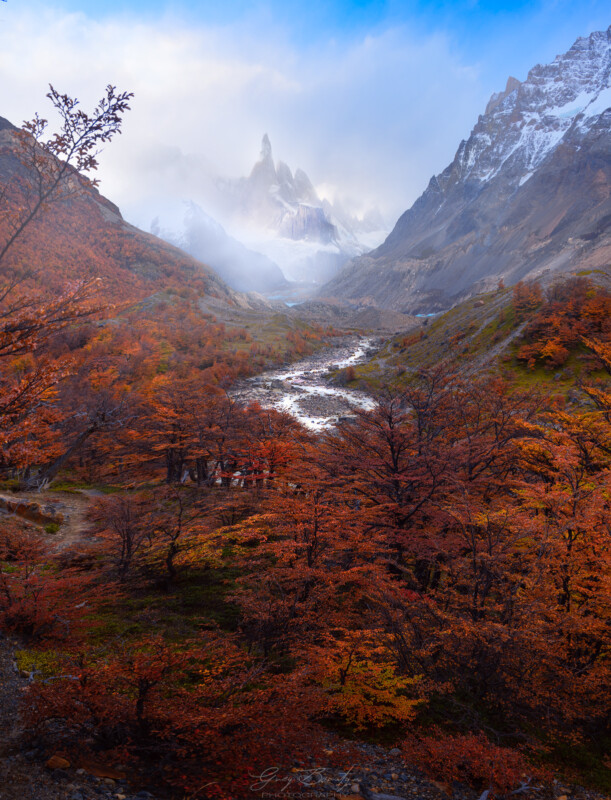
His workshops take small groups of photographers to beautiful and diverse locations worldwide. Boratyn tries hard to incorporate local culture into his workshops. “Beyond photography, my workshops often incorporate elements of local culture, enabling participants to connect with the people, traditions, and history of the destination. This adds depth to the experience and can inspire unique perspectives in their photography,” Boratyn explains.
He wants his clients to return home with great photos, improved photographic skills, new friends, and fantastic memories of incredible locations.
More details about Boratyn’s workshops are available on his website.
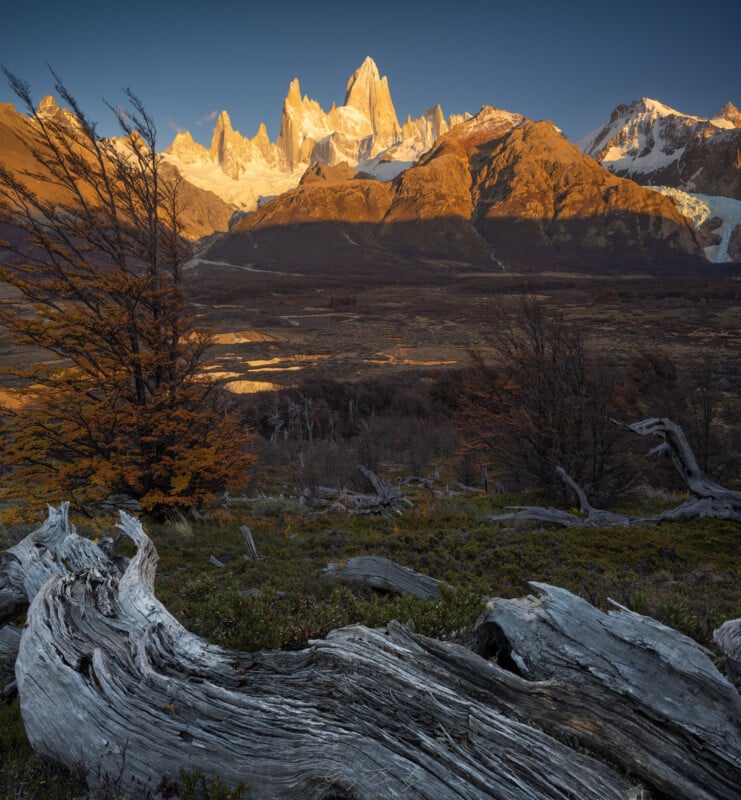
More from Greg Boratyn
Boratyn tells PetaPixel that he hopes his answers provide insight into his photography and offer practical tips that readers can use to improve their landscape and nature photography. “My answers may sound very ‘educational,'” Boratyn explains, “But that was my intent.”
Much more of Greg Boratyn’s beautiful and award-winning landscape photography is available on his website, Instagram, and 500px.
Image credits: All images © Greg Boratyn